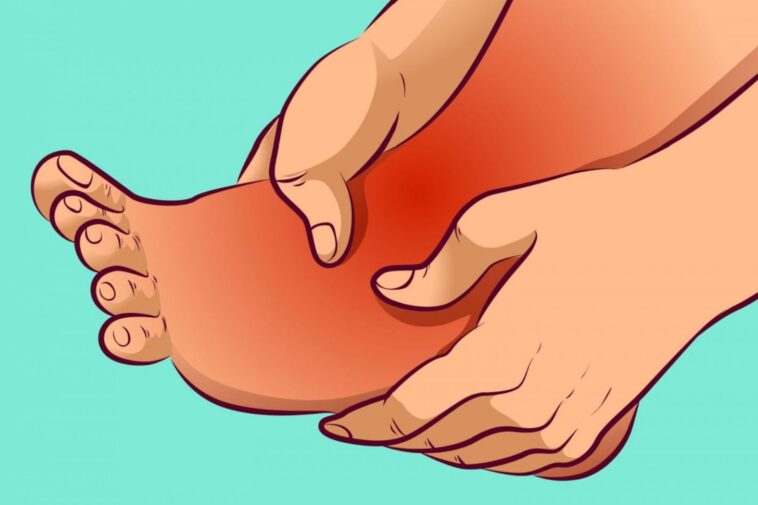Are your shoes feeling tighter as the day goes on? Do your legs feel heavy and uncomfortable, especially in the evening? You’re not alone. Water retention in legs affects many people, particularly as we age, but there’s good news – you can do something about it!
Before we dive into the solutions, let’s understand why this happens: our bodies sometimes hold onto extra water, especially in our legs, due to various factors like sitting too long, diet, or circulation issues. But with these practical tips, you can help your legs feel lighter and more comfortable again.
1. Walk Your Way to Lighter Legs
Getting up and moving might be the last thing you want to do when your legs feel heavy, but it’s one of the best remedies! Walking helps pump excess fluid back up through your body’s natural systems. Even a gentle 10-minute walk three times a day can make a big difference. Think of your leg muscles as natural pumps – each step helps move that extra water out of your legs.
2. Lift Those Legs Up
Here’s an easy trick you can do while watching your favorite TV show: prop your legs up on some pillows so they’re higher than your heart. Do this for 15-20 minutes, three times a day. This simple position helps fluid flow back toward your heart instead of pooling in your ankles and feet. It’s like helping gravity work in reverse!
3. Say Goodbye to Salty Foods
Those salty snacks might taste good, but they’re not doing your legs any favors. Salt acts like a magnet for water in your body, making your legs hold onto more fluid. Instead of reaching for the salt shaker, try flavoring your food with fresh herbs and spices. Fresh foods like tomatoes and celery naturally enhance your meal’s taste without adding extra sodium. When shopping, take a moment to read food labels – you might be surprised at how much sodium is hiding in processed foods.
4. Drink More Water (Yes, Really!)
It might sound strange, but drinking more water actually helps reduce water retention. When you don’t drink enough, your body holds onto every drop it can get – just like a camel in the desert! Aim for 6-8 glasses of water daily, but spread it throughout the day instead of drinking it all at once. Keep a water bottle nearby and take small sips throughout the day. Your body will thank you by letting go of that extra fluid it’s been holding onto.
5. Try Support Stockings
Support stockings have come a long way from the thick, uncomfortable versions of the past. Today’s compression socks are stylish, comfortable, and come in various colors and patterns. The key is to put them on first thing in the morning, before any swelling starts. They work like a gentle hug for your legs, helping to push fluid upward throughout the day. Many people notice a remarkable difference in how their legs feel after wearing them for just a few hours.
6. Move More at Home
You don’t need a gym membership or fancy equipment to keep your legs healthy. Simple movements while watching television or reading can make a big difference. Try pointing and flexing your feet while sitting. Make small circles with your ankles as if you’re drawing tiny circles in the air. Even standing up from your chair every hour helps activate your leg muscles. These small movements act like tiny pumps, helping move fluid out of your legs and back into circulation.
7. Treat Your Legs to Natural Remedies
Nature offers wonderful solutions for swollen legs. A warm bath with Epsom salts can work wonders at the end of a long day. The magnesium in the salts helps reduce swelling while the warm water encourages better circulation. Try brewing a cup of dandelion tea in the afternoon – it’s known to help your body release extra fluid naturally. You might also enjoy a gentle leg massage using a few drops of peppermint oil mixed with olive oil, always stroking upward to encourage proper fluid movement.
When to See Your Doctor
While occasional leg swelling is common, sometimes it can signal something that needs medical attention. If you notice sudden swelling in one leg, especially if it’s warm to the touch or painful, don’t wait to get it checked. Your doctor should also know if these simple home remedies aren’t helping after a few weeks of trying them consistently. It’s always better to be safe and have a professional evaluate any concerns you have about your leg health.
Making It Work Every Day
Success comes from creating simple, doable habits that you can stick with over time. Start your morning by putting on those compression socks before swelling begins. Keep a water bottle within reach and sip throughout the day. When you sit down to watch your favorite show, prop those feet up on some cushions. Take short walks after meals – even just around your home makes a difference.
Remember, your body responds best to gentle, consistent care. You didn’t develop water retention overnight, and it won’t disappear that quickly either. But with patience and these simple steps, you can help your legs feel lighter and more comfortable each day. Many people notice improvement within just a few days of following these recommendations.
The most important thing is to listen to your body and make these changes in a way that works for your lifestyle. Start with one or two of these tips that seem the easiest for you to implement. Once those become habit, add another. Small, consistent changes often lead to the best long-term results. Your legs have carried you faithfully for many years – now it’s time to give them the extra care they deserve.
Soon enough, you might find yourself enjoying evening walks again, wearing your favorite shoes comfortably, and feeling much more energetic throughout your day. Isn’t it time to take that first step toward happier, healthier legs?


